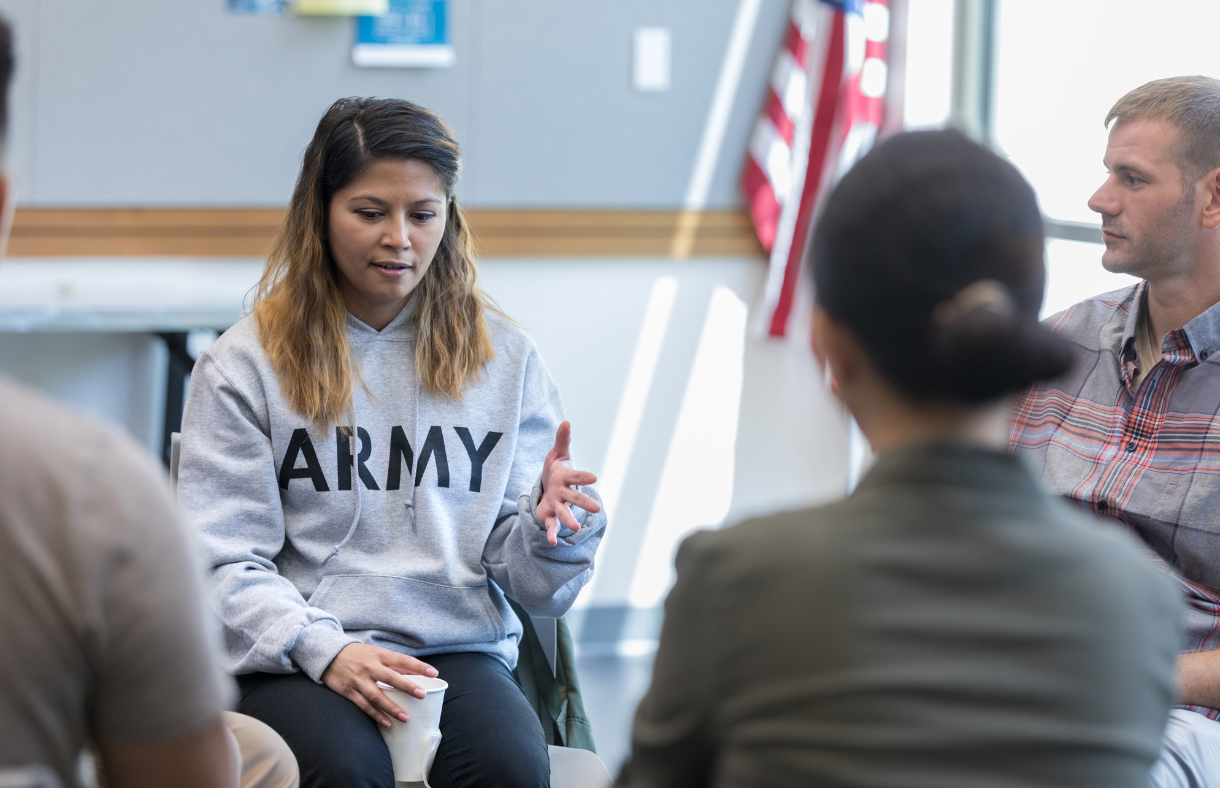Although the military was traditionally a man’s world, “fighting women” aren’t an entirely modern concept. Even the ancient Greeks had their legends of Amazon warriors. And for verified historical examples, we have:
- Queen Boadicea of Celtic Britain, who led an uprising against the Roman Empire around 60 C.E.
- Aisha, widow of the Prophet Mohammed, who rode in the Battle of Basra in 656 C.E.
- Joan of Arc, famous military leader in early-fifteenth-century France.
- Deborah Sampson, the best-known “cross-dressing” soldier (i.e., woman who posed as a man to join the military), who fought in the American Revolution and received a full military pension.
Outside of active combat duty, women have long served the military as medical providers, researchers, office workers, interpreters, and secret agents. World War II saw around 350,000 women in the U.S. Armed Forces; Vietnam, over 250,000. Today, there are around two million women Veterans in the United States—around 10 percent of the entire Veteran population.
That said, one in ten is still a small minority, and women Veterans still have challenges few male Veterans face. Not least the challenge of finding peers in a population where one is in the minority.

Am I All Alone?
Some women find their own families less than supportive—even where military enlistment is a tradition for men. “My dad and a lot of my uncles were all military,” says Chasity Wohlford, who served in the Navy in the early 1990s. “They didn’t even acknowledge that I’m a Veteran.”
The concept of the military as one big family, where everyone takes care of “their own,” doesn’t always match reality either. Especially not for those who look less like “one of the group” than like one of another group in close proximity. Wohlford is familiar with the frustration of being mistaken for a military spouse: “The VA and retired-from-service organizations are male-dominated. Unless I go in official military gear, I’ve been asked to join the wives’ club, or [at best] the auxiliary group. A lot of times there’s no place for the women Veterans: we’re ignored, or get catcalls, or wind up isolating ourselves to avoid unwanted attention.”
Veteran Mom
Many women also find that the Department of Veterans Affairs, officially responsible for providing Veterans with affordable healthcare and career coaching, falls short in serving needs associated with pregnancy, maternity leave, and childcare. In the Veteran community as in most other demographics, the majority of single parents are mothers, and motherhood tends to be an institution more respected in theory than in reality. Single-mom Veterans are twice as likely as the general Veteran population to struggle with basic housing expenses.
Another challenge surfaces for the single mother who has PTSD, addiction, or other common Veteran medical issues: unless she has a friend or relative she trusts to take the kids regularly, shortage of adequate VA-sponsored childcare may mean that she postpones getting treatment.
Post-Military Stresses
The mention of PTSD brings to mind the question of sexual harassment and abuse. It’s not certain whether female military members suffer more frequently than males: men are at their highest risk for sexual victimization in crowded, largely-male environments where they rank low in a structured hierarchy (i.e., penal institutions and the military). Still, women are more than five times as likely to admit they have experienced “unwanted sexual contact”—and considerably more likely to fear retaliation or humiliation if they officially report it.
Whether or not the military experience includes real trauma, most everyone has difficulty readjusting to civilian life. “In the military, they break you down and create a whole new person,” says Wohlford. “You come back and don’t know how civilians” stay organized and effective, with their less structured routines. “It was very hard on my mom when I came back from service, very difficult for her to understand how it changed me.” And again, women Veterans typically have difficulty finding empathy by connecting with other women Veterans.
There Are Resources
Not always, though. Houston, for one, is “ahead in a lot of areas,” with a large, mixed Veteran population and “an overflow of [support] resources,” says Wohlford, who notes several “women-specific” options:
- Camp Shield (“does retreats for women with kids”)
- Dress for Success
- Grace after Fire
Other resources with good records serving women Veterans:
- Combined Arms Veteran Transition Center
- Harris County Veterans Services Organization
- Impact a Hero
- Texas Veterans Commission
- United Way of Greater Houston
And, of course, Easter Seals Greater Houston.
For next steps in what remains to be done, Wohlford suggests focusing on peer specialists, fellow Veterans with lived experience. “Right now, we need a lot more people—especially females, who have been few and far between—to step into that role.”
See also: BridgingApps lists of tech resources for Veterans and their families.

